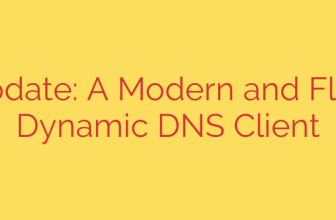
The Third Dimension of Cybersecurity: Why AI-Powered Networking is Your Best Defense
For decades, network security has been a two-dimensional battle. We built digital walls—firewalls, intrusion prevention systems, and gateways—to separate the “trusted” internal network from the “untrusted” outside world. This “castle-and-moat” approach focuses on monitoring traffic as it enters or leaves the network, a model known as North-South traffic analysis.
But what happens when the attacker is already inside?
The unfortunate reality is that sophisticated attackers inevitably find a way past the perimeter. Once inside, they can move laterally across the network—from one server to another, from a user’s workstation to a critical database—largely undetected. This East-West traffic is the blind spot of traditional security, and it’s where the most damaging breaches occur. To fight a modern threat, we need to add a new dimension to our defense: behavior.
Moving Beyond Rules: The Power of Behavioral Analysis
Traditional security tools operate on a fixed set of rules. They ask simple questions: “Is this IP address on a blocklist?” or “Does this file signature match a known virus?” While necessary, this approach is fundamentally reactive and cannot detect novel or stealthy attacks.
This is where AI-powered networking changes the game. It introduces a third dimension by focusing not just on what is on the network, but on how it behaves. Instead of asking, “Is this device allowed?”, AI asks, “Is this device behaving as it should?”
This subtle but profound shift from identity to behavior is the key to detecting sophisticated threats that would otherwise fly under the radar. An attacker using legitimate, stolen credentials might look normal to a legacy system, but AI can spot the subtle deviations in their activity that reveal their malicious intent.
How AI Builds a Smarter, Self-Defending Network
AI-driven network security isn’t magic; it’s a methodical, data-driven process that provides unparalleled visibility and control. The system works in a continuous cycle:
Comprehensive Data Collection: First, the platform ingests vast amounts of telemetry data from every corner of your digital environment. This includes data from endpoints, servers, cloud workloads, applications, and IoT devices. It creates a complete picture of all network activity.
Establishing a Dynamic Baseline: This is the core of AI’s power. Machine learning algorithms analyze weeks of data to learn the unique “pattern of life” for every user and device on the network. It understands who normally talks to whom, what protocols they use, how much data they send, and at what times. This living, breathing baseline becomes the standard for what is considered normal.
Real-Time Anomaly Detection: With the baseline established, the AI continuously monitors the network in real-time. It instantly compares current activity against the learned baseline. When a device starts acting strangely—like a marketing server suddenly attempting to access financial records or a user logging in from a new country at 3 AM—the system flags it as a high-fidelity anomaly.
Automated, Intelligent Response: Upon detecting a credible threat, an AI-powered system can take immediate, targeted action. This isn’t a blunt, network-wide shutdown. It could mean automatically quarantining a single compromised laptop, blocking a specific malicious connection, or sending a context-rich alert to the security team for investigation. This speed and precision can stop a breach before it escalates.
The Tangible Benefits of a Behavioral Approach
Adopting an AI-driven networking strategy offers more than just advanced threat detection. It delivers critical advantages for the modern enterprise:
- Stops Lateral Movement in its Tracks: By understanding normal East-West traffic patterns, AI can immediately spot and block an attacker trying to move from their initial foothold to more valuable assets.
- Gains Unprecedented Visibility: You can’t protect what you can’t see. AI provides a deep, contextual understanding of your entire network, finally illuminating the blind spots that attackers have exploited for years.
- Reduces Alert Fatigue: Security teams are drowning in alerts from legacy systems, most of which are false positives. AI surfaces only high-confidence threats with rich context, allowing analysts to focus their time on what truly matters.
- Embraces a Zero Trust Framework: This approach is a core pillar of a Zero Trust security model, which operates on the principle of “never trust, always verify.” By continuously analyzing behavior, you are constantly verifying that every device and user is acting appropriately.
Actionable Steps to Secure Your Network
Moving to an AI-driven security model is a strategic evolution. Here are a few key steps to get started:
- Prioritize Network Visibility: Begin by deploying tools that give you a complete and detailed view of all traffic, especially East-West communications within your network.
- Evaluate Network Detection and Response (NDR) Platforms: Look for modern NDR solutions that specifically leverage AI and machine learning for behavioral analysis. These are designed to augment or replace traditional intrusion detection systems.
- Shift Your Mindset from Prevention to Detection and Response: Accept that breaches are a matter of “when,” not “if.” Your goal should be to find and contain threats as quickly as possible after they breach the perimeter.
The age of the digital moat is over. In today’s complex and threat-filled landscape, relying solely on perimeter defenses is no longer a viable strategy. By embracing the third dimension of security—behavioral analysis powered by AI—organizations can build a more intelligent, adaptive, and resilient defense capable of stopping the advanced threats of today and tomorrow.
Source: https://feedpress.me/link/23532/17181400/the-third-dimension-of-ai-networking-has-arrived








